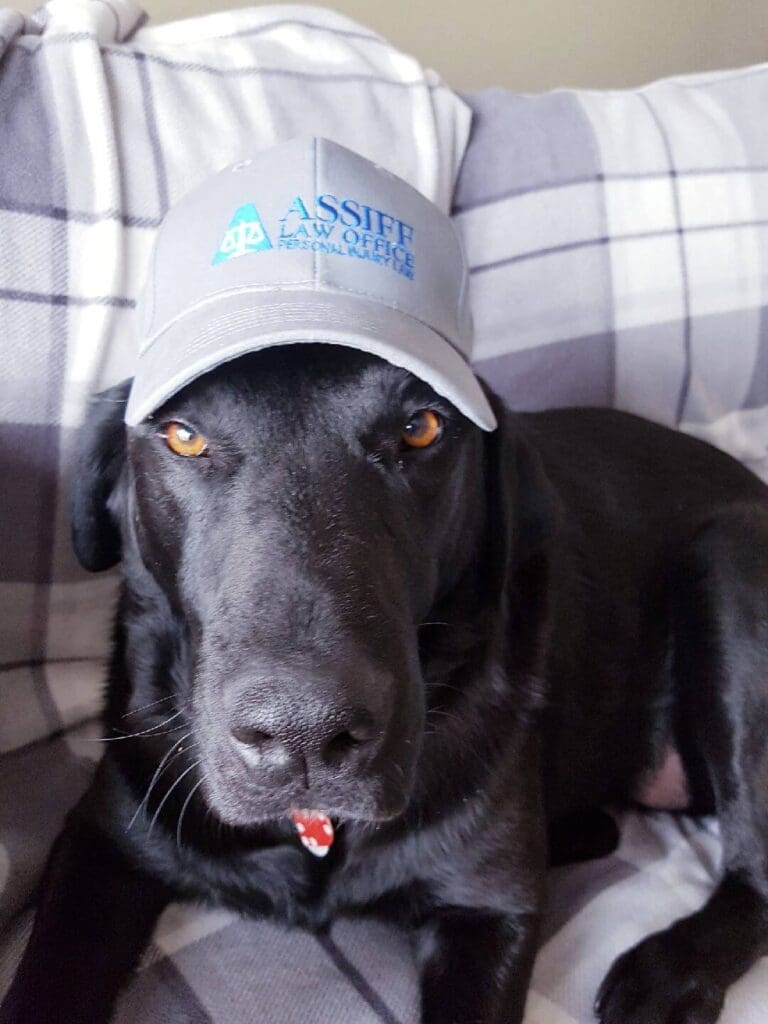For many of us, pets are part of the family. We may take them on vacation and in rides in the car. Those rides are not without risk – here’s a short guide to travelling by car with your pet.
Which is the safest seat for my pet?
The front seat is no place for an animal: don’t hold your pet on your lap while you drive. Also, even if your dog is big enough for the passenger side seatbelt to fit over him, he would still be at risk if the airbag should deploy, or if he slid over or under the belt. Don’t forget that airbags and safety belts are designed for humans.
Dogs who hang their heads out the open window are also at risk of injuries from airborne objects. Unrestrained dogs may even decide to jump out if they see something they want to chase. A dog riding in the bed of a pickup truck is also at risk of being hit by airborne objects, falling from the truck, or jumping out.
Without restraint, dogs can climb into your lap and restrict your view of traffic, block the brake or accelerator pedal, and be thrown into the windshield in the event of an accident or sudden stop. The best way to keep your dog safe is to use a harness, carrier, or crate. Look for equipment that has been crash-tested and certified.
How Long Can A Dog Ride In a Car?
A good rule of thumb is to stop every two hours to allow you (dog and owner included!) to stretch your legs and have a drink. If you’re travelling through the night and your adult dog typically sleeps through the night, you should be okay to stop when it suits you. A stop or two during the night will be required if your dog is still a puppy, though.
What should I bring with us on our trip?
- A pet collar with detailed contact information
If you should lose your pet during a road trip, the best chance of having it returned to you may be that tag. You might even consider having your pet microchipped or tattooed, to make identification foolproof. Make sure you keep the contact information linked to the account always updated.
- Sufficient food and water for the entire trip
Make sure that you take enough food to last until you get home again, and stick to the treats your pet is already used to having. You might even want to think about filling a jug of water from home, to minimize any chance of digestive problems.
- Your road trip kit should also include pet first aid items:
- Roll of gauze and bandages
- Pain reliever
- Hydrogen peroxide — both for cleaning wounds and for inducing vomiting
- Anti-nausea medicine
- A current photo of your pet
- Plastic bags for picking up after your pet
- Can opener
- Proof of rabies shots
- Toys
- Baby wipes — for cleaning your pet, your car and yourself
- Extra dog collar and dog leash
What if I have an accident with my pet?
If your pet dies as a result of a car crash, it may take years for you to recover from the loss of your pet. If you are a pet breeder, or you show pets, you may also lose your source of income. Even if your pet is fortunate enough to survive the car accident, you will soon be overwhelmed with vet bills.
If your pet is seriously injured in a car accident, you should contact us.
At Assiff Law, we are proud dog owners. We understand the boundless love that pet owners feel. If your pet was seriously injured in a car accident, we urge you to contact our law firm. We will listen to your story and help you recover fair compensation for your losses.
Two last tips for the road
- Introduce them to the car as early as you can. Pets that are used to travelling in the car from a young age are much more likely to be relaxed and happy during car trips. Start out with introducing them to the parked car and getting them used to sit in it with you, then start making short trips. Build up to longer journeys, but make sure they usually end in something fun like getting a treat or a walk.
- Give them time to digest. It’s best not to feed them right before a trip in the car. Give them plenty of time to digest their meal or don’t feed them until after the journey. You can also talk to the vet to see if they can have anti-nausea medication.

